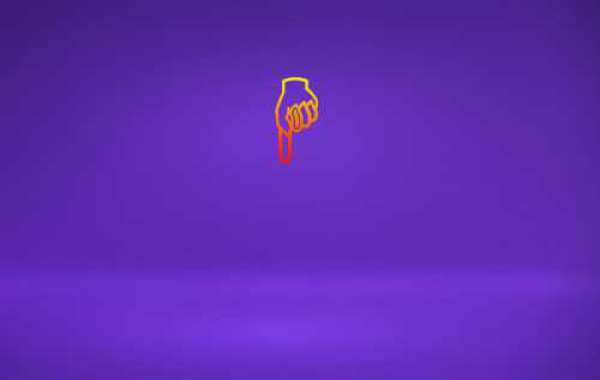Print industry, unlike any other industry, has experienced ups and downs in the previous year and a half. The industry's revenue fell 9.4 percent in 2020 alone. But now it is evenly gaining momentum. According to the latest Smithers market projections, the worldwide printing industry will reach $821 billion by 2022. Increased packaging, digital printing, and changing processes, as they recover from the pandemic are the reasons for growth. Some printing firms have a solid strategy in place. Others still have to look for ways to propel their business to greater heights of success.
Print's future depends on embracing exciting new waves of connection and media innovation. It appears to have a bright future. Increased High-tech progress has changed the arena of the printing industry. That has created a number of new trends affecting the specialty in recent years. New working models and clients' expectations are the forces behind the industry's change. In addition, people and company links have changed the dimensions of industries.
The print industry has included a variety of new technologies that has an impact on people's daily life. It has influenced the world we live in. From custom screen printing to 3D and sustainable printing, everything has changed. What does the future of print look like, given its continual evolution? Let's see.
Embrace Innovation
The pandemic has boosted High-tech adoption. Over 80% of companies have engaged in or have plans to invest in new technologies. The most important thing you can do to prepare your company for the future is to embrace technology. It will provide significant competitive benefits. Such as streamlined business operations, improved customer service, and more. Invest in the appropriate technology and help your company become more productive. As a result, you will save time and stay ahead of the competition.
Integration with Digital Technology
Digital print is one of the most important elements that push high-tech development in the print business. The market has switched from letterpress and ink in favor of a more cost-effective printing method. Digital print has numerous advantages, such as:
- Easy usage
- Reduced waste
- Streamlining your workflow
- Fast turnaround time
Another advantage of this method is the ability to print customized wholesale t-shirts on demand. Along with product couture, printing firms are providing short-run print jobs. They have also sped up the production process with the help of web-to-print software.
Thus, changes in printing technology can give success to the business. While saving print enterprises a significant amount of money and time.
3D Printing Will Become More Advance
The 3D printing market is expanding rapidly. According to Smither's research, global 3D printing will reach $55.8 billion by 2027. That represents a 23.0 percent annual growth rate.
Companies can now create 3D things with 3D print or an additive construction process. This growth of digital printing provides benefits to various industries. Such as wholesale t-shirt business, footwear, and packaging. Moreover, this method is the most appropriate for customized products. Therefore, marketers will employ this technology to produce bulk t-shirts and footwear.
Adidas, for example, has begun to produce sneakers with 3D technology in 2018. They demonstrated that it has increased company resilience. It has cut lead time to create a shoe that users can personalize.
So, this technology has become more advanced, less expensive, and more accessible. It has the ability to transform the industry. It will enable the production to take place at the time of consumption.
Get More Customized Products
As technology will change, marketers will be going to have more finely customized things for specific clients. Sauers, for example, indicates that there will be smaller, more personalized runs. As in the digital realm, where you may select your precise demographics. This is a win-win situation for everyone. Customers will obtain more appropriate information, and businesses will save money by not casting wider nets.
Printing will Become Less Harmful to the Environment.
Environmental reasons have become popular in various industries due to clients' concerns. Printing is no exception. Consumers want less harmful ways to print apparel. Therefore, companies have now shifted attention to the global challenges that this industry creates. Some have switched to less harmful ways as defined by the legislation. Even many big companies have established eco-friendly programs, for example, HP. This has been done in many ways. Like, they plant two trees in favor of every tree utilized in the printing process. And use recycled plastics, especially cartridges and paper. As per reports, if you reuse printer cartridges, it might save 400,000 tons of waste per year.
Many firms have also considered the shelf life of new products. This results in lower maintenance activities that aid to become more eco-friendly. While this was once considered optional, it has now become compulsory. As a result, it has now become a trend that will affect every company in the next years. Because customers will unlikely to choose a firm that does not put any effort to protect nature.
Increased Social Media Presence
Social network platforms nearly quadrupled their user population, from 970 million in 2010 to 3.81 billion in 2020. In the digital age, print enterprises must establish and expand their online presence. It allows them to engage directly with potential clients who want to avail their product or service. In turn, it will raise brand awareness, and enhance sales.
If your group does not have a social media presence, it is time to create one. Or if you do have, create a defined social media strategy that will help you to grow.
The first step to use social media is to determine which platforms are suitable for you. Consider your target demographic and the platform on which they spend the most of their time. For example, Facebook is the most popular among those over the age of 65. Whereas the majority of Instagram members are 34 or younger.
Later, you have to create an efficient social media content plan and manage your accounts. After that, monitor results with tools like Buffer, Hootsuite, and Sprout Social.
Next, join other groups, interact with pros, and have discussions with them.








